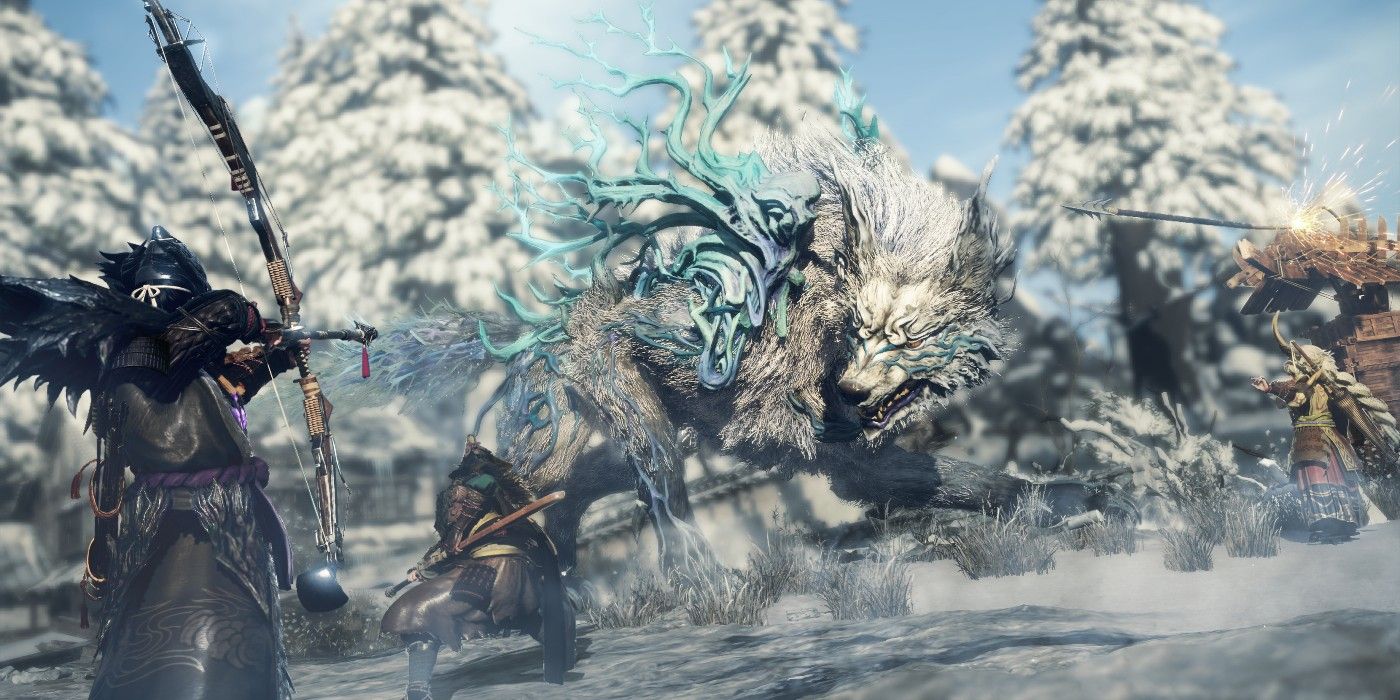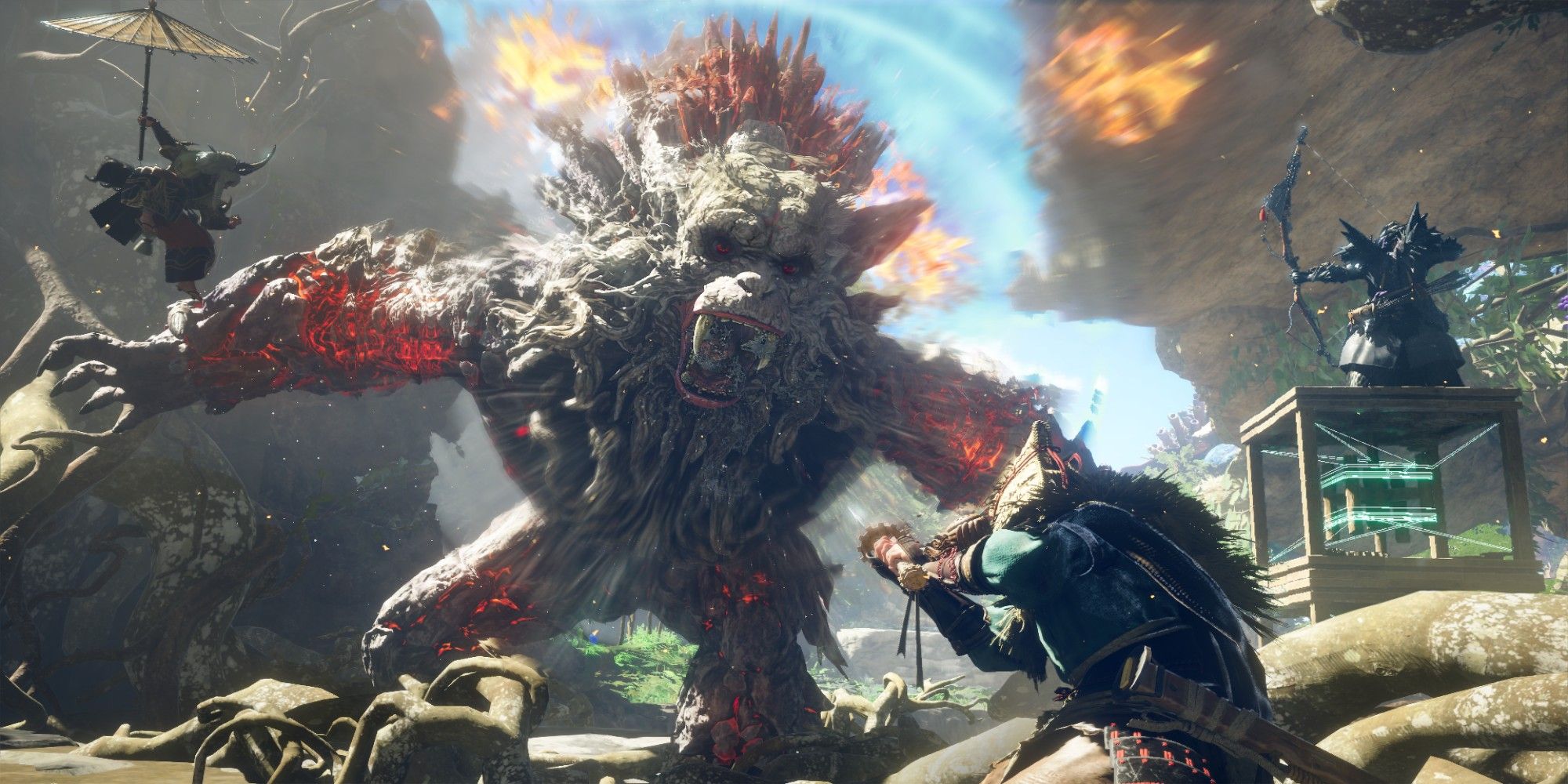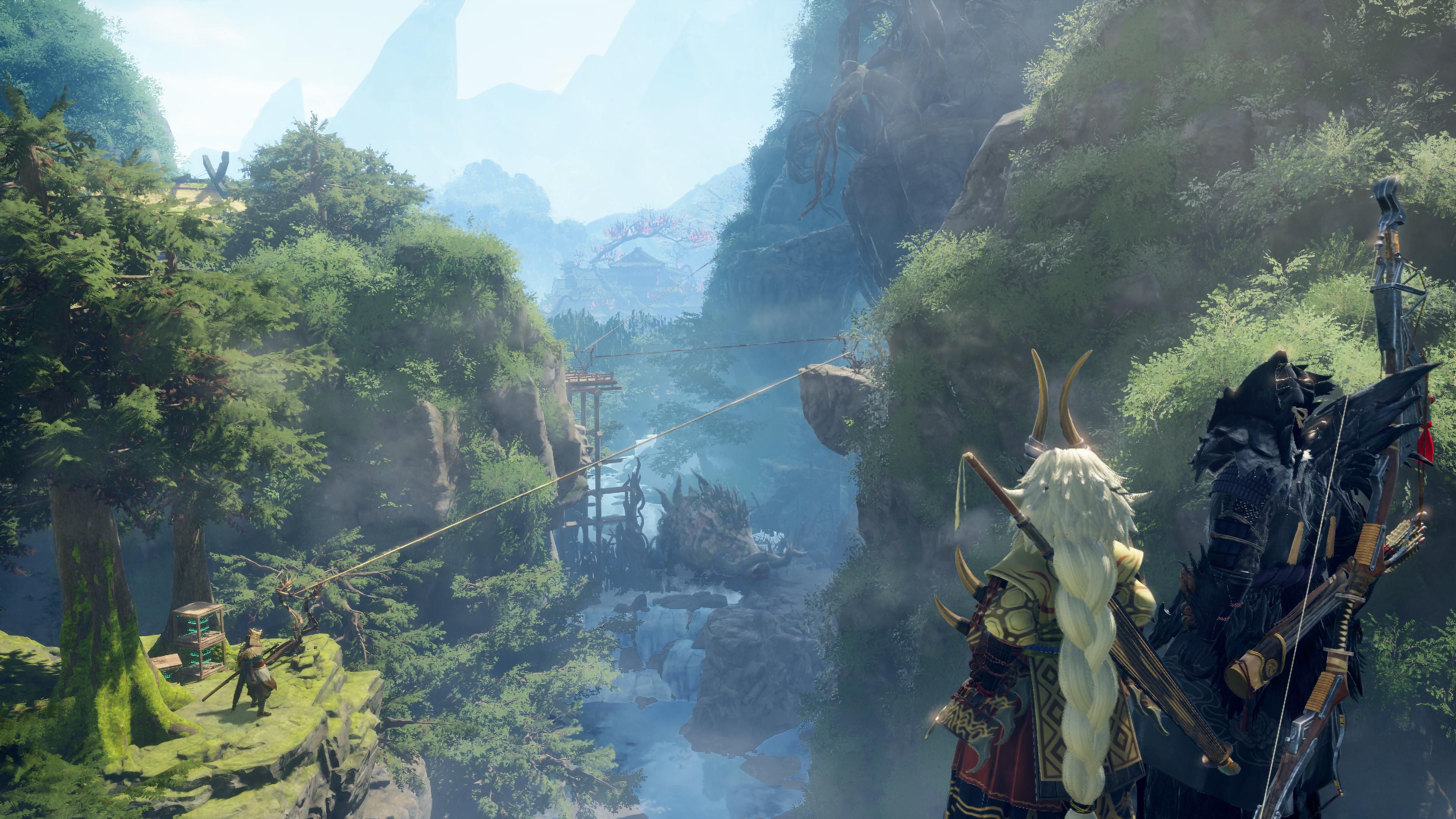Wild Hearts is a unique monster hunting title set in a fantasy feudal Japan, where players will use a combination of weapons and crafting to take down elemental creatures. After gaining the ancient power of the Karakuri, players will set off on a quest to protect the land of Azuma from Kemono, strong beasts who leave nothing but destruction in their wake. The game comes from Koei Tecmo and EA Originals, and is slated for release later this month, February 2023.
The premise of Wild Hearts is a unique new take on monster hunting, necessitating the use of both the game's eight weapon classes as well as the art of Karakuri. Karakuri come in a myriad of forms, from crates that can block attacks or be jumped off of for devastating air strikes to traps which stop the Kemono in their tracks. Players can choose to hunt alone or with up to two others, with Wild Hearts supporting online play at launch - however, it's not necessary to progress in the game.
Wild Hearts Directors Kotaro Hirata and Takuto Edagawa sat down with Screen Rant to discuss designing the game's Kemono, inspirations behind the Karakuri system, and what makes the game stand out within the monster hunting genre.
Screen Rant: Can you guys talk a little bit about the inspiration behind the Karakuri? I know it has some real historical origins to it.
Kotaro Hirata: Yeah, I think when we look at Wild Hearts, we had an idea within our development stages here that we wanted to incorporate a crafting element to it. But then when we think of the world that we've created, it's a very Japanese-style hunting action game, and how we incorporate this crafting element was really something where there's a lot of trial and error over as we tried to figure out how to get it right. And we got our hint from more of an ancient technique, we have our technology called Karakuri in Japan where things are built up using thread, they're attached to each other using thread, and so we focused on this.
Now even Japanese people, when we think of Karakuri, we actually think of these characters, these puppets that we have. So it's like puppeteering, you have all the threads and the pieces that control different pieces with attached threads, and we kind of took that and we just kind of expanded on it, where it's not really the puppets anymore, but we still wanted to still incorporate that system. And to build things using thread, we felt that it really fit in really well with the world that we were creating. That's how we worked on adopting this.
What was the creative process like designing the individual Karakuri in the game? It has so many, I'm curious how you decided which ones stayed in and which ones got cut.
Kotaro Hirata: Yeah, I think it was important for us, when we looked at the different parts that make up the Karakuri, is how convincing it actually is. So for example, if it was something that was just like some mysterious power that came together to bring it together, and you weren't really sure how it worked, that was not okay for us. It had to be something that was structurally sound, where you could say, "Oh, yeah, of course, it makes sense that you attach it with the thread and it works in this way. That totally works." And so that was one thing, how convincing it was, how structurally sound it was.
And then when we're looking at the Karakuri designs, we looked for things that were familiar to us in Japan. So for example, we have the glider, which is like a feather, but the glider is actually based on the shape of a Japanese lantern. So it's a shape that's already something that we're familiar with as a traditional Japanese shape. So that's something else that we wanted to actually incorporate into the appearance of it. And I don't know if you saw the trailer, there is another one, what we call the roller, which is something that you see in the trailer and that shape is based on a Japanese style watermill or waterwheel. So we have those kinds of things that have been incorporated.
Was it difficult to design Kemono players wouldn't feel bad fighting, especially with some of them taking inspiration from some pretty cute real-life animals
Kotaro Hirata: With Wild Hearts this was one of the hurdles that we faced during the development of it. When we looked at the prey, you know, the animals that had to be hunted, we tried to choose more what we considered more threatening animals. But it's true that no matter what you select, there are going to be people who consider them to be more cute or approachable or things like that.
And so really there's a lot of trial and error in how we make them appear or seem more threatening. And that's where I think you know the combination of these animals together with nature, their powers of nature that they have, it makes their threat to humankind much greater. And it makes them become creatures that really kind of have to be hunted. And so I think we played around with the design a lot to make sure we brought that out.
Takuto Edagawa: Also, I wanted to add that, you know, these larger animals, they have to be hunted, that's part of the game and it has to happen. And so we tried to make sure that in their design, and in the way they are portrayed in the story, that the player feels that way, that these are threats that have to be removed.
But when it comes to the smaller Kemono that are around, they don't don't necessarily need to be hunted. I mean, you need to go get the materials from them in some way, and this is something that came up later, somewhere in the mid-development stages. But these small animals, like I said, they don't have to be killed, and some of them you have the option of just petting them to get what you need as well. So we're actually leaving that to the users to decide how they want to deal with this.
Oh, that's really cute, I didn't know that. What made you decide on eight weapon types, and how do you feel they each help diversify the gameplay?
Kotaro Hirata: So we had a lot of different ideas, and then we ended up narrowing it down to eight from what we had. And what we were looking for was really a balance and the types of weapons that we made available. So we looked for some things that were traditional, and some things not as traditional and such, but also some things that are maybe for hand-to-hand combat versus more distance combat. So you know, we wanted to appeal to a lot of different types of players, and of course, different players have different fighting styles and such. So we want to be able to satisfy all that and cover an array of weapons that worked with all these different fighting styles.
And I think, also, each type of weapon had to have its own unique characteristics, it had to be standalone, pretty independently different from the others. And so as a player, you first start with what we call the Karakuri Katana, which is a type of sword, and you go from there and if it doesn't fit, then you can try the other ones. We want you to start with that anyway, and then if one doesn't fit, then there's always different ones to try out.
I know this game has been in development for about four years, and it's gone through a lot of changes in that time. What are some of the biggest ways that this game has evolved since it first started?
Kotaro Hirata: Honestly, I think with Wild Hearts right from the beginning, we wanted to create something that's going to be a new pillar for us. And from the beginning, from the get-go, it was going to be a Japanese style hunting game, that never changed. That stayed consistent throughout the entire time that we had here. All the other parts, honestly, I think maybe nothing remains. [Laughs] I think there's so much change, there's so much trial and error over the last four years that there's been so many things that have come and gone. But one thing I can say right now is we're very confident in this game, and that it's going to be this new type of hunting action game that is going to really appeal and we are very, very happy with what we're bringing forward now.
Do both of you have both a favorite Kemono and a favorite weapon in the game?
Takuto Edagawa: So for me, the Kemono that I like most is Ragetail. It's really I think one where, you know, throughout the whole theme here is how the nature and animals come together, and also the beauty as well as the fear that we feel for them. And I think it really comes together beautifully in this Kemono.
My favorite weapon is the Bladed Wagasa, the umbrella. I think with that one it's something that you really have to learn the right timing for in using it. So it's something you use to deflect the attack of the attacker, and it's really hard to get the timing right. But once you do figure it out, then it's very showy, and it looks really cool when you're actually using it right.
Kotaro Hirata: My favorite Kemono is the Golden Tempest. The Golden Tempest was something that came along closer to the end of the development stages, and so, you know, by then we explored a lot when it came to the Kemono. And so it was really what I considered to be a real ultimate or complete figure when it comes to the actions, the design, the configuration and such. And I think if you look across the entire genre of hunting action games, it is probably one of the more ultimate, more attractive prey that you see out there.
My favorite weapon is the Karakuri Staff. And right from the beginning, I wanted to do this and other developers were like, "Stop. Not this one." [Laughs[ They said it's too difficult, it's too tough to try to figure out and to incorporate. And I would not budge, this is one that I just had to have. And so I really kind of pushed through with that. So I was really invested in this one and really happy when we got through. And I think it's really fun, it takes on a lot of different forms. I really hope gamers will try this out.
Is there anything you guys want players to know about Wild Hearts?
Kotaro Hirata: I think when players you know are playing Wild Hearts, I would like more players to be really conscious of the Karakuri system. I think when you first start the game, you don't really have to use the Karakuri system to do anything, and so it's not necessary. So I think some players might pursue that route, just not exploring it enough, but the Karakuri system wants you to really work on it and master it. They're really expansive, the scope of things that you can do makes the player much stronger. And this is the kind of game that you're going to play over and over again, and as soon as you do that, your skills are going to improve. I think that a lot of what we've considered to be some of the most positive aspects that we've incorporated into Wild Hearts is reflected in the Karakuri so I really hope that players are engaged with that.
Source: WILD HEARTS/YouTube
Wild Hearts releases February 17 for PS5, Xbox Series X/S, and PC via Steam, Epic Games Store, and the EA App.



